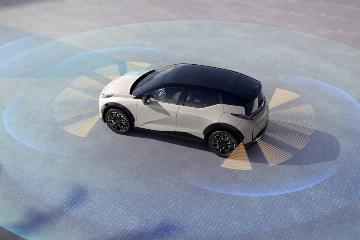Mega-Merger Looms for Japanese Automakers
Advertisements
The automotive industry is currently in a state of high tension, particularly with the Japanese giants Honda, Nissan, and Mitsubishi potentially merging their operationsThis news reverberates through the global market, prompting analysts and enthusiasts alike to ponder the implications of such a unionThe question on many lips is: why now? And, is this move primarily a strategic response to the rapidly shifting landscape of the industry, particularly in light of China's aggressive advances in automotive technology and market share?
As of December 20, Honda boasts a market capitalization of approximately $36.992 billion, while Nissan and Mitsubishi are valued at $10.477 billion and $4.992 billion, respectivelyShould this merger occur, these three companies could form a significant automotive powerhouse, easily surpassing Hyundai's production volume with an annual sales forecast of over 8 million units
They would rank as the third-largest automotive group globally, following industry leaders Toyota and VolkswagenThis consolidation echoes a trend seen a few years back when the merger of FCA and PSA created Stellantis, now the fourth-largest automotive manufacturer worldwide.
The groundwork for this merger may have been laid as early as March of this year, when Honda and Nissan first hinted at their intentions to collaborate, focusing on developing new software and electric vehicle technologies togetherFurther progression came in August with the signing of a memorandum of understanding aimed at jointly researching next-generation software-defined vehicle platformsThis willingness to partner signifies a clear acknowledgment of the shifting dynamics within the global automotive industry.
While Japanese automakers have predominantly enjoyed a reputable standing within the global market, it’s clear that they are facing immense pressures—particularly from the burgeoning Chinese automotive sector
- Weak Recovery of Gold Prices
- Tech Stocks Propel Nasdaq to New Heights
- Insights on Investment from Market Environment Changes
- Silver Average Price Expected to Reach $33 Next Year
- Ongoing Premium! These Funds are Actively Warning of Risks
The importance of the Chinese market cannot be overstated; it represents a crucial segment that no global automaker can afford to overlookHowever, recent years have highlighted vulnerabilities within Japanese firms, notably Honda, Toyota, and Nissan, which are perceived as having lagged behind in the electric vehicle raceThis lapse in timely responses to market trends has led to grave concerns within the industry.
For example, Toyota—once the epitome of Japanese manufacturing excellence—has made moves to invest in smaller manufacturers like Subaru, Suzuki, and Mazda, while Nissan appears to be struggling, having announced a substantial reduction in global production capacity combined with significant workforce layoffsThis systemic shake-up suggests that the Japanese automakers recognize the need for collaboration, lest they risk being outpaced by agile competitors, particularly those emerging from China.
The perception that this merger is born out of necessity—a “weak union”—could not be further from the truth
Honda's fiscal data reveals that despite a financial dip, the company still experienced revenues of ¥948.2 billion, leading to a net profit margin of ¥51.5 billion last yearLikewise, Nissan's ability to maintain sales of billions, despite challenges, counters the notion that both companies are merely desperate actors banding together in a time of needTheir motives are calculated, strategic, and necessary as they seek efficiency and cost reductions to flourish in an increasingly competitive world.
However, it would be remiss not to frame this conversation within the context of the ongoing evolution in electric vehicle technologyThe so-called "Chinese wave" has ushered in a new model of automotive practices that demand adaptation and agilityThe once unassailable dominance of traditional automakers is under serious threat, and the urgency for Honda and Nissan to innovate and recalibrate their approaches cannot be understated
Their collaboration represents an important initial step in this direction, demonstrating a shared acknowledgment of both necessity and opportunity.
In the broader context of the automotive industry, this merger signals a paradigm shiftIt reflects a growing recognition that collaboration is increasingly crucial as firms look to pool resources for research and development, particularly in the electrification space where Chinese investment and innovation have gained groundThe scale of investment needed to keep pace with changing consumer preferences and regulatory frameworks surrounding emissions and sustainability presents a daunting challenge—a challenge that necessitates successful partnerships across the industry.
Moreover, there is a unique competitive dynamic at playThis merger could create ripples that affect not only Japanese automakers but also global competitors, which may need to evaluate their own strategies

A successful alliance among Nissan, Honda, and Mitsubishi could pressure other firms to consider similar unions or collaborationsAs industries evolve, competition will intensify, necessitating a more nuanced understanding of partnerships that transcend traditional boundaries.
In summary, this prospective merger of Japanese automotive giants is not simply a response to short-term difficulties but a profound strategic initiative that could reshape the landscape of the automotive industryIt highlights the crucial importance of agility in decision-making, the need for collective strength against a backdrop of fierce competition, especially from China, and the imperatives for innovation in the face of rapid technological advancements.
As we watch this unfolding story, it's essential for stakeholders and consumers alike to remain vigilantThe evolution of the automotive industry is not just about the three giants but may set the stage for a broader transformation that impacts all players in the field
Leave A Comment